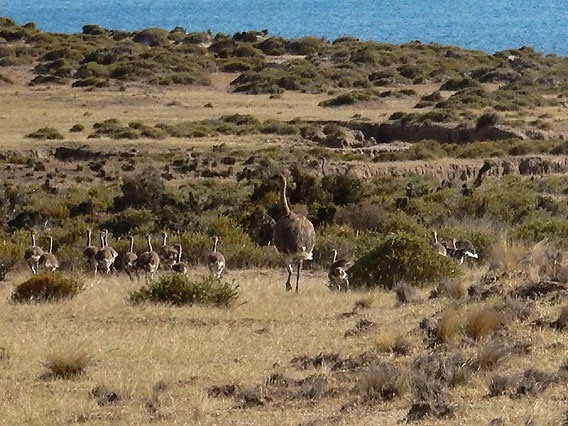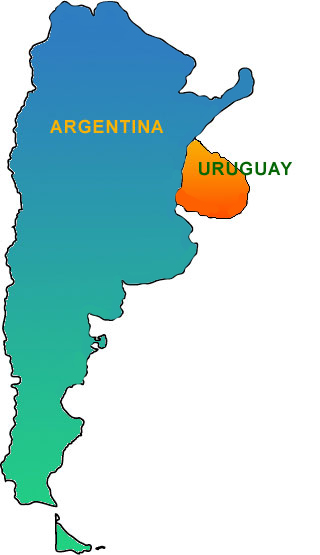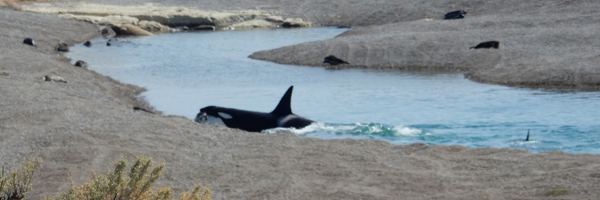When Orcas Attack
The Valdés Peninsula is famous the world over for an unusual natural phenomenon that takes place here. The orcas have learned how to come up onto the beaches, grab a seal or sea lion for lunch, and get back into the water without missing a beat. I was not expecting to see this on this trip, because it usually happens in January or February, when the sea lion pups are on the beaches.
I had talked with Flavio and Marcela about this and got conflicting reports. Flavio told me I probably wouldn't see an attack in November; it just wasn't the right time of year. But Marcela chimed in and said she had been working in the area a year ago, spending an entire day out by the Caleta Valdés and seeing seven attacks!
Clara had told me that she had seen an attack the previous morning, so my hopes began to increase that I might witness this amazing exhibition of raw nature. I woke up early in the morning, excited about the day ahead. I had a light breakfast of coffee and fruit, then headed out toward Punta Cantor.
The early morning Patagonian countryside was alive with guanacos, rheas, and jackrabbits. On several occasions, I saw a mother rhea running across the desert with as many as 15 baby rheas following her at high speed. A dramatic and moving sight.

A mother rhea and her chicks
After driving about 44 kilometers, I began to look for the turnout to Punta Cantor, but missed it because I was expecting a Guardaparque (ranger station). Punta Cantor is actually more of a visitor services area, with a restaurant, gift shop, restrooms, and several trails that lead down to overlooks. I drove past it the first time, not noticing it because it was closed up and deserted this early in the morning. A few kilometers later, I realized I had gone too far and turned around.
On the way back, I stopped at a small overlook, thinking it might be Punta Cantor. I was actually just a kilometer away from the place Clara had told me about; I realized later that Punta Cantor was visible up on the cliff in the distance. But something was happening at this place and my excitement began to build as I saw the few people there running toward the observation deck. There was a beautiful view, looking out directly over a long sand spit that jutted out into Caleta Valdés. A group of elephant seals, females and pups, had situated themselves at the tip of the sand spit, feeling secure in this secluded beach.
When I got to the observation deck, I realized I had arrived just in time. A pod of five or six orcas were moving down the coast, approaching the two sandbars that formed an opening to the inlet known as Caleta Valdés. The tips of each sandbar were covered in elephant seal pups, babies just a few months old that probably weighed about 300 pounds each.
The orcas came into the opening of the inlet with a sense of purpose and determination that sent a chill down my spine. With an orchestrated cooperation, three of them moved closely along the beach, while another one launched itself up to grab a seal and drag it back into the water. The whole attack lasted a few seconds and soon the water was filled with splotches of bright red blood.
The observation platform was up on a cliff, high above the action down on the beach, with about 20-30 people standing and observing. It was quite an emotional scene. Children were crying, people were gasping in horror at the carnage down below. It was nature in its purest and rawest form, with highly intelligent apex predators fulfilling their role in the complex interconnected web of life on earth. It was awesome.
After about an hour, the orcas began to disperse and head back out to sea. The elephant seals seemed to have learned their lesson and moved further up the beach, although their numbers were now depleted.
I took off and continued my exploration of the peninsula, driving north up alongside the long inlet of Caleta Valdés. The landscape is beautiful here, wide open desert, mostly flat, sparsely vegetated, with views of the inlet and the Atlantic Ocean beyond. Sprawling estancias dot the interior of the peninsula, while sheep seem to coexist peacefully with the guanacos and rheas. A small penguin colony clings precariously to a steep cliff above the inlet. I stopped to see them and it was like reuniting with old friends, my buddies from Cabo Dos Bahias.
70 kilometers north of Punta Delgada is Punta Norte, the northern tip of the Valdés Peninsula. There is a short boardwalk that goes out to several dramatic viewpoints, looking out over a long beach lined with lounging elephant seals. Orcas patrol the coast offshore, but the beach is not easily accessible here, making a quick lunch a little more difficult for them.
I wandered around Punta Norte for a little bit, taking in the sweeping views from the overlooks. Armadillos scurried around the bushes, miniature armored cars looking for a quick snack. A small café was up on a hilltop and I stopped in there for a light lunch. I found a table outside on the deck and enjoyed the best café con leche I've ever had. Something about being out in this wild place made the flavor all the more delicious.
From Punta Norte, I headed south, completing a grand loop around the entire peninsula and ending up back in Puerto Pirámides. By this time it was late afternoon, so I found a hotel on the beach where I could spend the night. It was crazy expensive, but I wanted to treat myself after such an exciting day. They gave me a big discount, because the door to the deck would not open, so I had to climb out the window to get out on the deck and enjoy the beautiful view of the beach. Ah, this is Patagonia.
I picked up some sandwiches from the corner market, feeling too tired to go out to dinner. After it got dark, I went out onto the beach and felt the bliss of being the only person out there, listening to the waves and watching the stars of the southern sky.
| Next up: Watching Whales |


© 2016 Michael Hanrahan